Alaska is a state like no other, and even for those smart enough to consider it more of a different country than another state often don’t understand just how vast and different the Last Frontier is.
Sitka, Juneau, The Kenai, Homer, Anchorage, Denali, the North Slope, Nome, and Fairbanks/the Interior are just some of the clear cultural sections of the state and yet each area is so different from the others that they can seem like a different country from one another!
If you’ve ever heard about stories of travelers to the United States for the first time thinking they’d land in New York on Thursday, drive to Miami on Friday for the weekend, then visit Las Vegas after half a day’s drive, understandably you’d laugh.
Alaska may look close together, but there are great distances between those dots 🙂
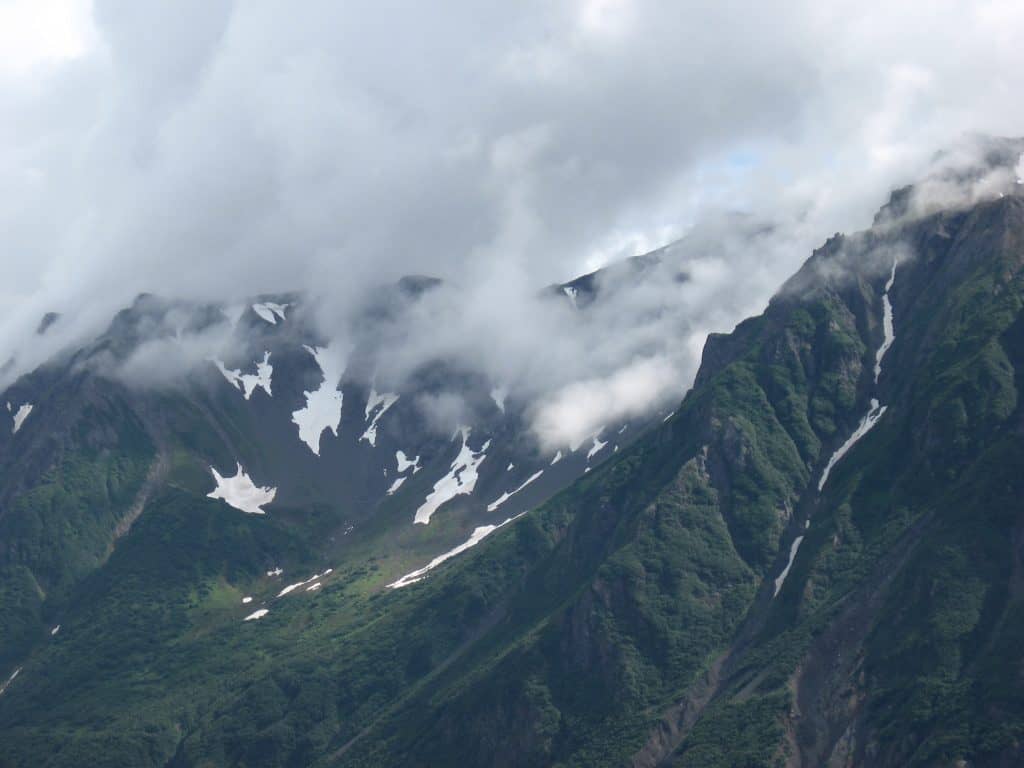
Three Places for Alaska Flights to Arrive
Generally speaking, no matter where you are ending up there three points where you can land in Alaska before being shuttled, driven, or most likely flown to your final destination. If you are flying into the state, you are almost certainly ending up at one of these three points…and often you’ll even land in Anchorage to end up in Fairbanks or Juneau.
Anchorage
Ted Stevens Anchorage International Airport: ANC
Anchorage is the main transportation point for most of the state. This makes sense as it’s the only city of any size and holds nearly half of the state’s entire population. The city has long been the gateway to traveling into the rest of Alaska and that is still the case.
Anchorage is home to Ted Stevens Anchorage International Airport, which is by far and away the largest in the state. Chances are even if you’re heading to Juneau or Fairbanks, most of the time you’re landing in Anchorage before hopping on another flight.
This isn’t always the case, but it happens often enough to pretty much declare Anchorage the central transportation hub for people returning home to Alaska or coming in from out of state.
Anchorage will also be a destination on any cruises throughout the region. For a long cruise slash whatever guided trip or vacation package, it may very well be the last stop on the water before departing for land transport to explore the Kenai, Denali, or even a long train ride to the Interior.
Other Travel Options:
- Bus tours are common to Seward and/or Denali
- The Alaska Railroad Anchorage to Fairbanks route is a once-in-a-lifetime experience (I mark two days off to take the 12-13 hour train ride every visit – once each direction)
- Enterprise and Avis Rent-A-Car both operated out of Anchorage.
Fairbanks
Fairbanks International Airport: FAI
Fairbanks is a city close to my heart as that’s where I lived most of the time in my four years living in the state. The one “big” settlement in the Interior, on a crowded year it might be 50,000 including military and students but generally it’s accepted as a city a touch over 30,000 people. It’s home to the University of Fairbanks Alaska (UAF) as well as Fort Wainwright.
Even in all my times flying in and out of Fairbanks (many dozens of times), only one of those flights wasn’t routed through Anchorage, and that was a Minneapolis to Fairbanks 7 hour flight (would not recommend).
Getting to Fairbanks normally involves flying from Anchorage. This usually takes under an hour once you’ve landed in Anchorage, which has one of the more interesting airports in the country.
Other Travel Options:
- A LONG drive through British Columbia, Yukon Territory, and finally into the U.S. Involves two border crossings of the U.S. Canada border
- The Alaska Railroad is a great way to see the beauty of the state if you have a day to burn on the way to Anchorage. This literally takes 12-13 hours for a one-way trip but I ALWAYS find the trip to be worth it!
- Extensive taxi and public bus options – however Fairbanks is a SPRAWLING city so keep a lot more tapped aside in your travel budget
Juneau
Juneau International Airport: JNU
Juneau is the capital of Alaska and the most isolated of the big three cities, which is impressive when you consider just how wild and undeveloped the state is. Reaching Juneau involves boat or plane. This is because Juneau is on an island. While “driving” to Juneau can happen if you drive to the right coastal community that the marine ferry taxi services.
There are multiple direct flights to Juneau via Alaska Airlines from Seattle and Anchorage on a daily basis. This will be the most common way to stop in and see Juneau.
The other way many people visit Juneau is with cruises. Because of the gorgeous fjords, glaciers, and whale spotting opportunities, Juneau is a popular destination for cruises, or at the very least, a good stopover.
Other Travel Options:
- Not many – Juneau is very isolated to get to, though there are options once there
- Taxi and Juneau Car Rental services can cover places you don’t feel like walking to
- Juneau itself is very walkable, and easy to travel via bike rental, as well.
Can I Drive to Alaska?
The question “Can I drive to Alaska?” comes up quite a bit in Google search and the answer is yes. Technically. But it’s not an easy route, and you should expect a less than smooth trip.
First there is just the pure distance. The Alaska Highway is the connecting road that makes driving to Alaska possible. This highway starts in northeast British Columbia and connects with Delta Junction, Alaska, which is 95 miles away from Fairbanks, the main city of the Interior. This highway is 1,387 miles, and that’s not including the roads going through Canada just to start it, or connecting with roads to get to Fairbanks, and then anywhere else in the state.
There’s a second way to drive to Alaska via another road in British Columbia, but even with that “close” drive it is a ton of miles and an insane amount of time.
A drive from even a close-ish city like Seattle will have you looking at a road trip of either 2,145 miles or 2,347 miles depending on which of those two routes you take. And again, that’s starting from “very close by” relatively speaking.
Here’s a snapshot via Google Maps:
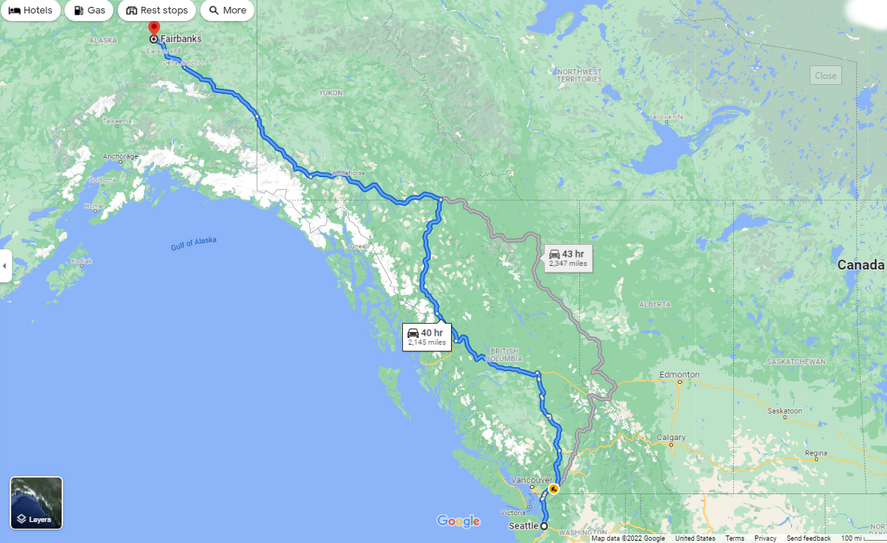
That’s 40 hours or 43 hours of just driving. Not stopping to eat, get gas, sleep, etc.
Also very important to note: although this highway is far safer, more paved, and more modern than at any point…well than ever before, it’s still a very wild road. Sections are usually one lane for miles as the road is being re-done to pave and modernize it.
Other parts of the road are still quite rough. Parts of the road are very windy, hilly, and there are some steep curves you’re not taking at high speeds. in other words, Google’s estimation of how long it takes is likely wildly optimistic.
That has been confirmed in conversations I had with multiple people who actually made that long drive whether as the trip of a lifetime, or actually moving to start a new life.
Be Prepared for Winter Weather
So you are north. Like very north. Often in high elevations up north. Even in May and June there are nights where you could see frost or a freak snow storm. Not common, but even some of the popular tourist lakes in the Yukon will still have ice in May and the same is true of the Fairbanks/Interior area of Alaska. Even for a late spring/early summer trip you want to have sweaters/sweatshirts, gloves, some heavy fall wear and at least one decent coat.
This isn’t to scare you off. The chance of a blizzard is low…but snow does happen and cold weather most in the Lower 48 would associate with February versus May is going to be a part of that.
Keep this in mind in general, but especially if you intend to do a lot of sight seeing and camping along the way.
If you run into unusually temperate weather for the entire trip, then all’s the better. You can just keep the heavier stuff packed – but it’s better to have it than run into multiple 20 degree days with nothing but a thin long sleeve shirt.
Take the normal precautions before a road trip and you should be fine. Just don’t be like the tourists who assume May 2,000 miles north is as warm as May at home…because it’s not!
Alaska by Region
One of the more interesting things about geography in Alaska is that the state is so huge that it has very distinctive cultures and regions. Considering the sheer size of the state (map below with the Continental United States for comparison) this shouldn’t be a huge surprise, but it’s not something most of us expect from a state of under 750,000 people.
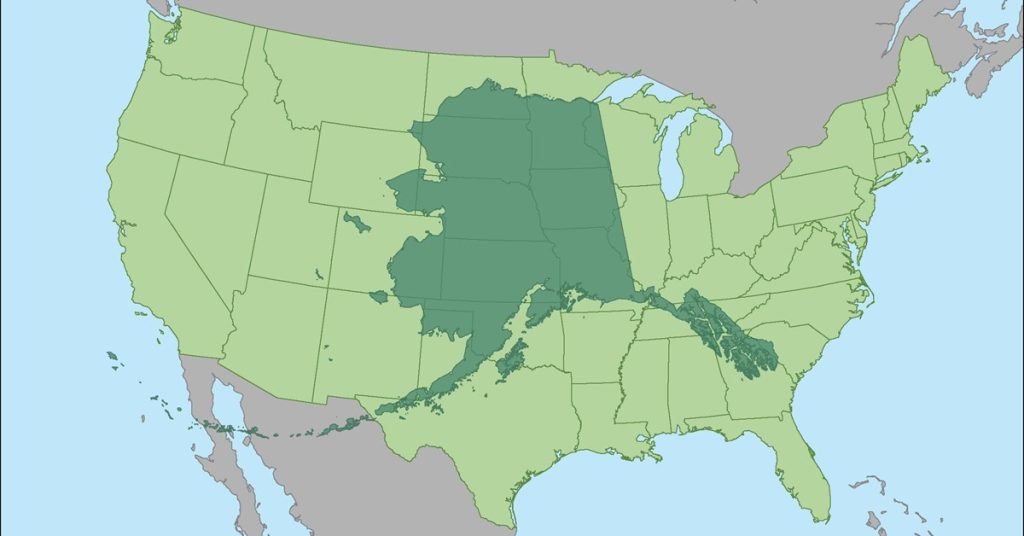
Alaska is distinctly Alaska. I tell people visiting for the first time to think of it more like a different country with some shared customs versus a different state and that helps a bit with any surprise culture shock.
So while these regions are very different from each other, they are all still very uniquely Alaskan…but life on The Kenai is a lot different than living in Anchorage or in The Interior.
While this isn’t scientific by any stretch, in general with the way locals talk about areas I feel safe in saying there are 10 general “Regions” of Alaska, each with its own quirks and perspectives.
If you want to know about the local culture, quirks, and idiosyncrasies of each area then it’s important to have an idea of what region you’re in. One thing’s for sure – regardless of where you are, you’ll never have any doubt that you’re in someplace special when you’re exploring Alaska!
Anchorage
Let’s start with the obvious one: Anchorage is its own region. For a long time Anchorage held roughly half the state’s population. While it’s closer to 40% now, that makes it by far and away the biggest urban area in the 907 and definitely the only region that feels urbanized…well to some extent.
Anchorage is incredibly urban…compared to the rest of Alaska. Otherwise it remains distinctly Alaskan in a way that will amaze many first-time visitors to the area. What they find extraordinary, many Alaskans will take in stride.
You know, like re-routing a marathon through the city because a black bear refuses to move. You know, typical Tuesday stuff.
Distinct Features
- Largest city in Alaska (I know duh, but let’s state the obvious)
- Transportation hub to every single other part of the state
- Home of the Alaska State Fair (Palmer, summer)
- Alaska Heritage Center (worth the visit)
- Chugah State Park
- Even as the “Urban” part of Alaska, still very distinctly Alaskan with mountains, woods, and hiking trails galore
There are great hiking trails through one of the most spread out cities in the world, and plenty of areas that feel more like the middle of nowhere versus civilized land. And have the healthy populations of black bears and moose to prove it. This isn’t surprising considering the massive Chugach State Park is right there hugging up to Anchorage, and is worth the visit.
The Anchorage area is not only Anchorage but nearby towns like Palmer and Wasilla. This encompasses up to several hours’ drive in all directions but the urban area and surrounding frontier, and supporting towns, are all considered the Anchorage area.
That said, there’s no question you’re still in Alaska. Hiking trails are surrounded by wilderness, a “city park” has an entirely different definition. Make sure to visit the Alaska Heritage Center and consider some of the bus tours to nearby sites of interest or even to Denali and back. This can be a great way to see some of the local sites and work through any overwhelm before getting your full travel legs under you.
While there’s no hard and fast borders, generally speaking as a rule of thumb you can assume you’re leaving the “Anchorage Region” when you’re north of Wasila/Palmer and thus headed on the one major highway towards Denali. To the south once you hit the Whittier turn-off you’re leaving the Anchorage Region and heading distinctly into the Kenai.
One final note about Anchorage:
While you may hear some from various other parts of the state call Anchorage “Seattle Junior” with a laugh, it’s important to know that is an insult, and it can be a pretty heated one depending on how personally someone living in Anchorage takes that comment. So even if you hear that thrown around (it used to be very popular in Fairbanks), use that term with caution (or better yet not at all) when down in or around Alaska’s largest city.
Shane “Big Alaska” – from first-hand experience when he was still a cheechako
Enjoy exploring Anchorage as it is the hub through which almost all Alaska travel goes through.
The Kenai
The Kenai is one of my favorite places to visit in the entire world. Homer has some of the best saltwater fishing charters in the world as you go out hoping to catch a barn door, aka halibut.
Unfortunately, the days of the Homer Jackpot Halibut Derby are over, but that shouldn’t stop you from enjoying a charter from the “Halibut Fishing Capital of the World.”
The charters here are top notch, halibut aka “barn doors” give a heck of a fight and are absolutely delicious with unbelievably white flesh that becomes otherwordly at a great fish fry.
Distinct Features
- Homer, great art town and halibut fishing capital of the world
- Soldotna, largest town on the Kenai known for Orthodox onion dome churches and distinct Russian Orthodox cemeteries
- The Kenai Region is even a Borough (Alaska equivalent of a county) and includes “mainland Alaska” coastal lands opposite shore of the Kenai
- Very mountainous beautiful region with the legendary Sterling Highway
- Also home to Seward, port town that leads to Kenai Fjords National Park with some of the best accessible glaciers in the state
A water taxi to Grewingk Glacier National Park is a gem, and is good for a day trip or a multi-day camping expedition if you want to make it all the way to the glacier and see the furthest the trails have to offer (which is a ton!). This is actually a stunning hidden gem in a state full of them, and also one of the things to check out while in Homer.
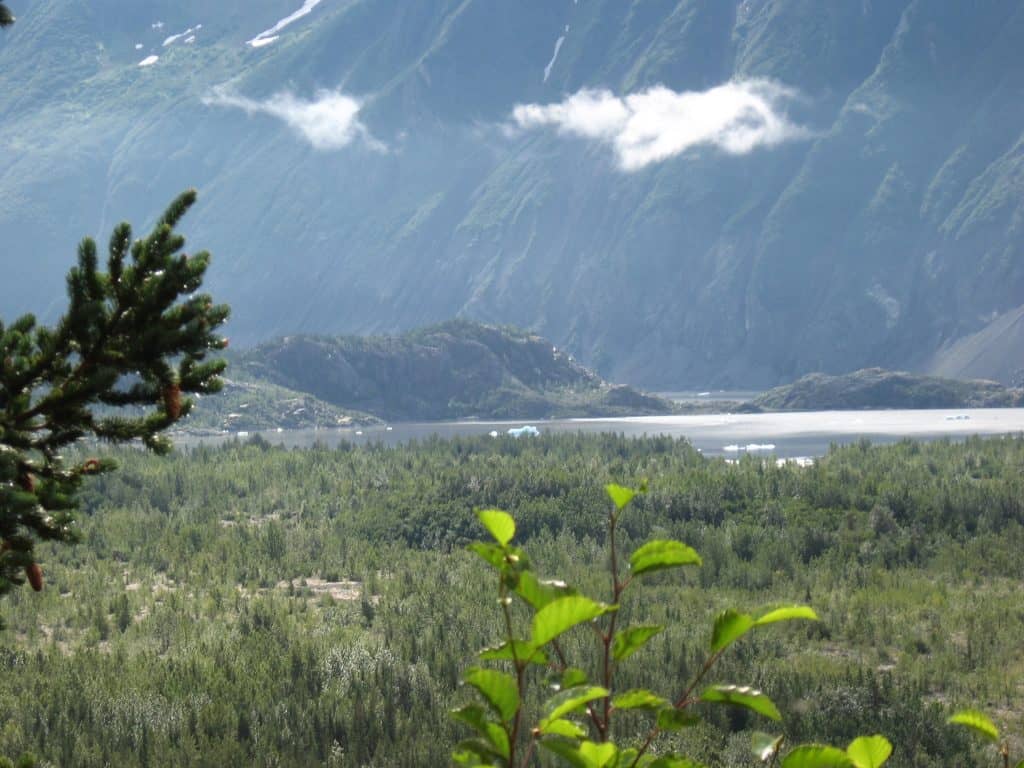
Soldotna and Seward are also excellent towns with friendly people, unique cultures, and plenty of local sights and places of note to visit. I love the Russian influence as you will see mini-onion dome churches, Orthodox crosses, and other clear signs of the Russian influence on the area’s original settlements.
Glacier cruises, wildlife sight-seeing, and whale cruises are common, and the many rest spots along the Sterling Highway are worth a stop just to take in stunning views that have mountains, sea, forests, and wildlife all from one point. This is one of the best regions to catch sight of mountain goats doing what they do…hanging out on what looks like impossibly sheer cliff sides.
The Kenai Peninsula Tourism site is a great spot to check out what might be happening in the area while you’re planning to visit.
I love the entire state, but like many people who traveled Alaska, lived there for a time, or who live there, the Kenai holds a special place in my heart. It’s one of my favorite areas and one I look forward to returning to again soon.
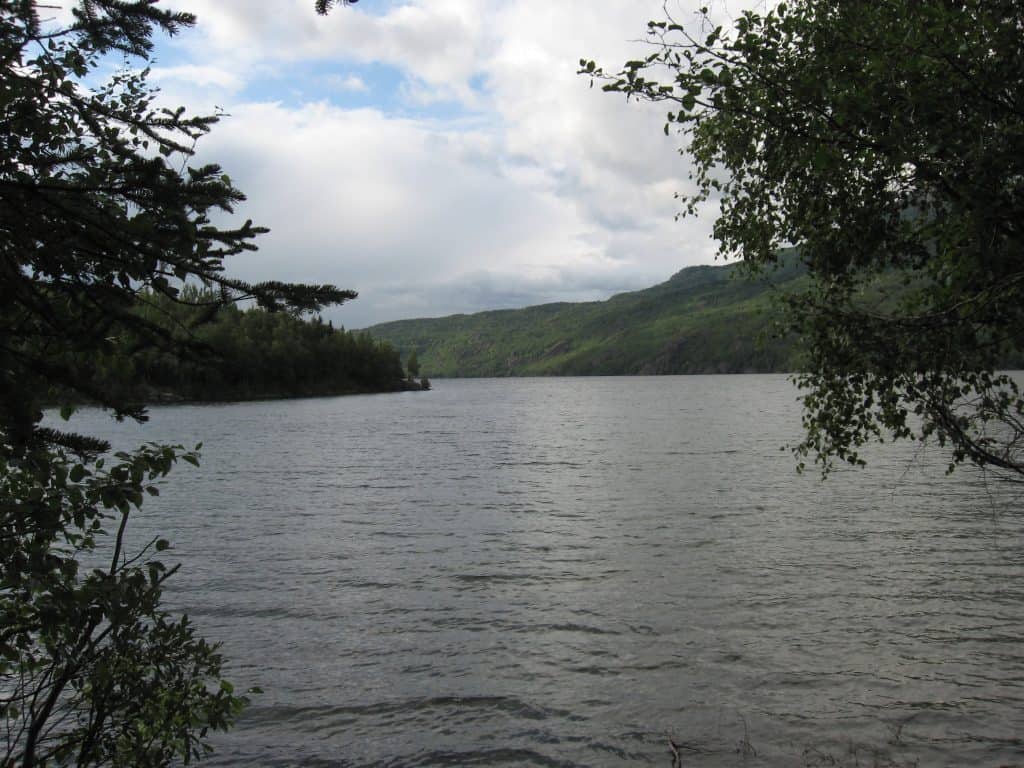
The Interior
The Interior is where I lived for most of my four years in Alaska. Specifically, I lived in or just outside of Fairbanks, the largest city in the area by far, home of Fort Wainright, and one of the three largest cities in the state. The Fairbanks is a spread out city. You can’t build that tall because of the permafrost but there is no shortage of land…which is why a city of 30,000 can stretch out over 15-20 miles or more as the crow flies.
A trip to a church “Just out of town off of Farmer’s Loop” to the edge of the other part of the city can take 30-35 minutes even without traffic. Which also shows that those with an always rushing feeling/attitude may struggle when running to one part of town versus another.
Because it takes time, and a leisurely drive is a lot more enjoyable (and makes more sense) when you’re dealing with highways that shift slightly every year due to permafrost.
But the Interior is a place that feels wild. There are tourist spots, but it doesn’t feel so touristy. You are very aware of how isolated you are from heavily developed civilization, and you stop at every small town for gas because there are only so many options.
Case in point: the University of Alaska Fairbanks (UAF) is 2,250 acres in size and has nearly 26 miles of trails on the actual campus. That’s right: literal miles of trails through woods for hikers, cross country skiers, and there’s even a pretty sizeable lake that makes for a great hike – just keep the eyes open for moose.
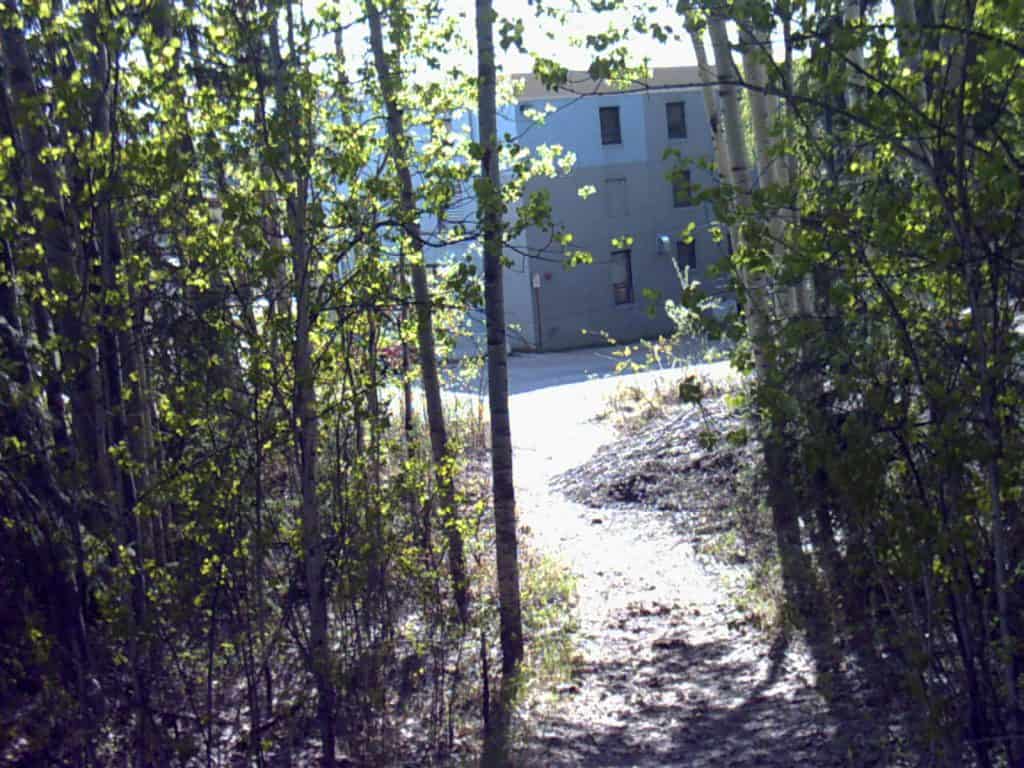
North Pole Alaska reflects the Santa/Christmas theme, and the Chena Hot Springs aren’t just a tourist destination but a favorite of locals, as well. Much of the beauty of the Interior comes from exploring. In many directions there is only one major road, and you need to plan excursions carefully to make sure you don’t run out of gas in the middle of nowhere.
But even the simple act of driving 20 or 30 miles can bring breathtaking views, wonderous experiences, and full memory cards of pictures of a truly wild land.
If you’re in town during the right night make sure to catch the Midnight Baseball Game – that’s an experience. The Museum at UAF has some of the most unique architecture and is a fantastic visit, as are the botanical gardens just down the road. Make sure to visit the Alaska Salmon Bake among the other many great bars and restaurants that you will want to explore.
And if you like bar food, visit my old favorite haunt The Oasis and be willing to drop the money for the famous Combo Platter. You only need one for the whole table. Trust me.
And possibly bring a defib for all the heart clogging that overflowing platter of deep fat fried goodness will cause.
Distinct Features
- Main city of Fairbanks – in the same way Anchorage is a central travel hub to well all of Alaska, Fairbanks is where all the roads in the Interior meet
- Home to the Midnight Baseball Game in summer (Fairbanks)
- Home of famous North Pole, Alaska
- Chena Hot Springs
- UAF Museum of the North
Denali
One of the most popular tourist sites in all of Alaska is Denali, and it’s not hard to see why. Denali, formerly named Mount McKinley before the name was officially changed back to the name all Alaskans always used for it, is the tallest peak in North America. This area is home to some of the most beautiful breathtaking views in all of Alaska, and that’s saying something.
There is some infrastructure around Denali and multiple guided bus tours from Anchorage to see and experience the area. There are tours that start around Denali National Park itself, as well. While they do a good job of providing plenty of tours, plenty of busses, it’s important to note that this is the most popular tourist spot in all of Alaska so it’s always a good idea to call ahead and figure out your options as opposed to just showing up and hoping.
There are bus tours, flyover tours, and incredible hiking trails right into the deep wilds of the area. If you love dogs visit the Husky Homestead, and take advantage of some truly unique and incredible museums and learning opportunities in the area.
One of the amazing things about Denali is you can take all the conventional routes for exploring the park, but it is also a place where you have ample opportunities to immerse yourself in the wild and explore in ways that are distinctly Alaskan. Hike, camp, take a bush plane, helicopter tour, or rent some off-road ATVs. Yup, that’s an option, too, to explore a National Park truly worthy of that designation.
Distinct Features
- Most famous National Park in Alaska
- Focuses around Denali, the largest mountain peak in North America
- Wildlife tours with busses often include close up looks of bears and moose
- Multiple park exploration options
- Guided and independent tours
- One of the most beautiful an legendary National Parks in the United States
Juneau – Southeast Alaska
Yup. Some places have unique names or descriptions, and then there’s “Southeast Alaska.” Other Alaskans will sometimes say Juneau and refer not only to the capital city but also to the fjords, the inlets, Sitka, the entire area that hugs the Canadian coast and feels so far away from the rest of the state. Juneau is a gorgeous city and it is definitely worth the visit, but be aware they are very separate from the rest of the state so it’s important to plan with that in mind.
Getting form Juneau to anywhere else will require travel so planning out an itinerary that lets you enjoy the area and all it has to offer without being rushed to heavily there a then too quickly out is important.
Trams up to Mount Juneau and Mount Roberts offer truly stunning views from high local elevations that allow you to see just how breathtaking the entire area is. The Tongass National Forest is a unique experience even for Alaska, while the Alaska State Museum and multiple garden tours are must-sees. There’s a lot in the area to see and appreciate, and you’ll have no problem getting your share of local flavor.
Sitka is steeped in its history as a Russian colony before Seward’s Folly and offers a very eclectic and fascinating mix of things to do. A bit out of the way, that just buys visitors all the more appreciation for those who brave the unconventional itineraries to visit the special out of the way sites of Alaska. Sitka is also a place to see Russian architecture, actual shrines of saints, and totem poles from the native population.
Distinct Features
- City of Sitka, Alaska
- City of Juneau, Alaska
- Glaciers (don’t miss Mendenhall Glacier and all it has to offer!)
- Fjords
- Whale watching tours
Kodiak
Kodiak Island can be easy to forget about, but this awesome island is a very distinct region of Alaska and not just because it’s home to some of the largest grizzly bears in the world (aka the Kodiak Grizzly). Between the abundant salmon, berries, and relatively moderate temperatures compared to other regions that far north, this island produces some of the largest brown bears in the entire world.
You may even get lucky enough to see one of these famed Kodiak grizzlies…though hopefully from a very safe distance 🙂
The island itself is gorgeous with that rare combination of very hilly semi-mountainous area that is utterly covered in green. Harbor towns hug the coast and provide spectacular pictures of beautiful communities that are hard to match. Cruises or water taxis go to parks like Kenai Fjords National Park, Whittier and Valdez for Prince William Sound, and Glacier Bay National Park.
There’s a lot available to see here and simply (cautiously) getting a local guide to explore everything this amazing island has to offer is definitely a worthy experience.
This Kodiak travel website is one of the best resources I’ve found for getting an in-depth and up to date look on what’s happening on the island and only scratches the surface. Part of the charm is the sheer wilderness and small communities that encourages that Alaska experience and interaction with friendly no-nonsense locals always up for a beer and a story.
How to Get to Kodiak Island
- There is a small flight to and from Kodiak that flies daily out of Anchorage
- You can take the ferry (which does allow cars, trucks, and RV’s up to a certain size) from Homer, but be warned this is a 9.5 hour trip

Distinct Features
- Island known as “The Green Emerald Isle of Alaska”
- Massive grizzly bears, and thriving bear population
- Biggest fishing hub in the state
- The Holy Resurrection Orthodox Cathedral is a famous attraction
- Visit the Alutiiq Museum (very much worth it, IMO)
- Fishing, fishing, and more fishing!
The Arctic Circle or The North Slope
The Brooks Mountain Range and north of there is when you really hit the Arctic. One of the first seasonal jobs I took in Alaska was to go wash dishes for 12 hours a day at a northern camp. Why? Well how often can you say you worked north of the Arctic Circle? Plus $13 an hour and free housing was pretty decent for seasonal work back in 2003/2004, especially when there’s nothing to spend it on so your just save up.
Prudhoe Bay and Barrow are the two “larger” “settlements” that border the Arctic Ocean to the far north. Only Prudhoe Bay can be reached by road, which can be reached via the Dalton Highway.
There are only a few very isolated native villages in this region, all of which can only be reached by bush plane. Exploring a lot of the Arctic involves flying around the north whether for a day, or having an experienced guide for a multi-day look whether hunting, hiking, photography, or whatever else the reason for your visit.
How to Explore the Arctic Circle
- The Dalton Highway is the only road to the far north (FYI, big trucks always have the right of way) and ends at Prudhoe Bay
- There are flights to Barrow out of Fairbanks and Anchorage
- Barrow is inaccessible by ground and must be reached by flight
- Air Taxi is your best bet whether visiting remote villages, or exploring bits of the Arctic for the day, or planning a multi-day trip that involves pickup at a pre-determined spot (usually where you landed) a few days later
IMPORTANT: Prudhoe Bay is not a normal “settlement” by any standards most people would understand it. This is a settlement of around 2,000 built around the largest oil fields in North America and 2,000-4,000 transient workers at any given point in the season. The roads to the Arctic Ocean are private and watched over by armed guards.
You need to make contact with the proper travel agencies to make arrangements for escort to see the Ocean or get guided past private roads to areas that can be visited under supervision for a fee.
Prudhoe Bay is a VERY rough and tumble Old Oil Town, NOT a conventional place for tourists – be wary and act accordingly.
Distinct Features
- Home to Utqiagvik (aka Barrow), northernmost city in North America
- Home to Prudhoe Bay, biggest oil fields in North America (and one of largest in the world)
- Serious Tundra to the far north; home of the Brooks Mountain Range
- Incredible Aurora Borealis sights in the winter
- Famous Whale Bone Arch in Utqiagvik
- Pure Arctic wilderness – it’s a very unique type of wilderness
The Bush
The Bush is sort of a “catch-all” term for the massive amounts of wilderness throughout the state away from roads or development, or that include the villages you can only reach via bush plane. So there are areas within a hundred miles of the outskirts of Anchorage that would be considered “The Bush” while many areas of the Interior many hundreds of miles again would also be considered The Bush.
There are small towns scattered throughout the wilderness, and they are mostly self-sufficient. While it’s possible to visit, for those looking to check out these areas it’s good to get a recommendation, go along with a bush pilot making a regular run, or something similar to those circumstances. Trips to the bush can also involve being dropped of via float plane to an area where you might be hunting, photographing wildlife, or in the case of one of by friends from back in the day, getting paid working on the girlfriend’s dad’s cabin.
The bush is unfiltered wilderness where bears, moose, and other wildlife live in abundance. These trips can be amazing, but be prepared and be armed for those just in case scenarios.
Distinct Features
- Isolated and wild – if you need a bush plane/float plane to get there, congratulations you’re likely there
- Cut off from the rest of “civilization”
- Bush plane is a major source of transport to and from any settlements or land being developed (camps, cabins) that are in the middle of nowhere.
- No “points of interest” other than any geographical areas you’re interested in seeing
- Smattering of native villages in various areas
- Dog sleds in the winter and off-road ATVs are the transportation methods of choice once on the ground
Nome
Nome is a small coastal community that is actually decent sized by Alaska standards with a population of 3700. While a lot of people could argue that Nome is just another village out in the bush, the fact it’s on the coast, has an interesting history, and really developed in a way that is different really sets it apart as being its own area and its own thing. Besides, Nome is one of the end locations of the world famous Iditarod dog sled race, so it has to be its own area, right?
Historically, Nome Alaska is known as being the last great Gold Rush town from that era. They have a fascinating history that is featured in multiple small museums and the visitor center.
And of course, because of the local road system to explore the area around Nome, the opportunity to REALLY see some isolated areas in Alaska, to see village life, and have a solid Alaska tourist experience is great. If you catch the right time of year participating in a festival or local celebration can be a really great experience.
How to Get to Nome
- Via plane – there are flights out of Anchorage every day, and some regional airlines out of Fairbanks and Anchorage have flights throughout the week
- Some cruises head up to Nome, but this is a small number (Nome is not part of the Water Taxi System)
IMPORTANT: Yes, there are a series of highways that make up the “Nome Highway System.” No, you can’t drive to Nome. Let me explain: Nome developed 150 miles of highways to local areas of historical importance, beautiful points that can attract tourists, and very small villages within an arm’s throw (yes, in Alaska 150 miles of virtually undisturbed wilderness is still a stone’s throw) so the highways connect those to Nome, but it’s a very limited area of highways in that small region.
Distinct Features
- Historical Gold Rush Museums and Sites
- Isolated Nome highway system
- Visitor Center can connect you with local experts/specialists in a variety of areas
Aleutians
There are very few who have been out this way, and they are among the most isolated of the many isolated areas you can find in the Last Frontier. Not a common place for visitors at all, these isolated islands are beautiful and distinctively unique, even by Alaska standards. These stretch out all the way to within sight of Russia the furthest to the west.
These volcanic islands are beautiful but there’s no question about the harsh reality of life that demands tough people to live in a place this isolated where nature can get very nasty even before winter fully sets in.
This is generally not a place you’ll find tourists. It’s one of the toughest places to live and exist, even by Alaska standards, so don’t be surprised if a visit invokes some genuine curiosity from the hearty folks who inhabit this section of the Last Frontier.
Distinct Features
- The long narrow peninsula and many islands stretching out from the southwest part of the state
- Extremely isolated islands leading out into the notoriously volatile and dangerous Bering Sea
- Largest Settlement Unalaska (over half of population of all the Aleutians)
- Includes Dutch Harbor, made famous because of The Deadliest Catch show following crab fleet
The Aleutians are a send-off port for the crab fleets, have several villages spread out over enormous distances, and isn’t the type of place you just go on a whim as a tourist.
If you want to see what settlements look like where everyone needs to be tough to scrape by and the dock taverns can be rough and tumble…but boy are they also fun!
You Will Need More Than One Trip
To truly experience the vast amazing land that is Alaska, you’ll need more than one trip. Aside from just pure sheer size, the vastness of parks, the unique regions – there’s just so much here. The culture is independent, self-sufficiency is highly valued, and every story of independence and strength comes with supporting each other as a community and a refreshingly blunt friendliness that is different from anywhere else I’ve ever lived, visited, or traveled.
I spent years exploring the Interior, attending countless cabin parties meeting new and interesting people with every background story imaginable. I spent months in the Arctic, and plenty of weeks here and there exploring The Kenai with my best buddy Tom, who was from the Homer area, Anchorage, and I just missed out on visiting the monastery on Kodiak.
Alaska is a truly stunning state and it really does live up to its moniker of “The Last Frontier.” I loved my years living there and every single visit back is a treasure. You can tell those who have experienced it and those who haven’t with questions like “How can you take the same 12-hour train ride a dozen different times?” The answer: easily.
When you’ve see it and experienced it, you know. These are the major regions of Alaska and a visit to any one of them can be the experience of a lifetime. Now go and make your own stories in this amazing place!
